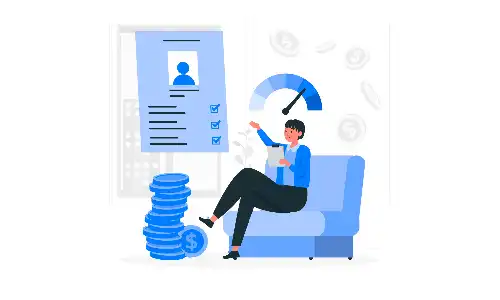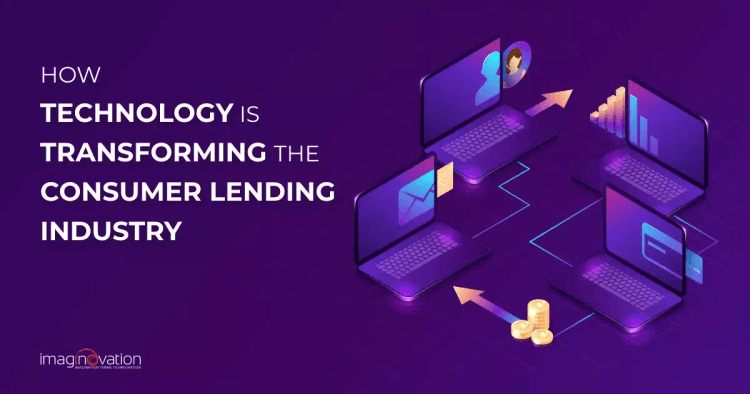Technology-led innovation has brought ample opportunities for expansion in the consumer lending sector. As a result, consumers have numerous options for finding loans and accessing lenders on various digital platforms.
The competition is tough, with numerous alternatives for consumers to choose from. So, what separates you from your competitors?
The efficiency, convenience, responsiveness, and optimized customer experience of the onboarding and lending process separate you from the competition.
In this article, we will discuss how technology is changing consumer lending and explore some digital lending trends impacting the industry in 2024 and beyond.
Let's begin!
What is Meant by Consumer Lending?
Sometimes in life, we need a financial push to meet specific needs. Consumer loans help us get that push.
For example, suppose Mr. Chris, a painter, needs finances to pay for his daughter's school fees or house rent. He would need a consumer loan provided by his bank or another financial institution.
Consumer lending deals with the financing of personal loans. It refers to loan services primarily meant for the personal needs of individuals. These loans are long-term in nature and are provided by financial institutions. In some instances, the lender may also be a business that offers in-house credit to individuals in exchange for their business.
Unlike business lending, consumer loan services do not require collateral.
How Technology is Changing The Consumer Lending?
Until recently, getting a loan was a tedious process. Consumers had to fill out lengthy and complicated forms, and approval could take weeks.
With more lending firms adopting cutting-edge technologies, borrowers can now receive almost instantaneous loan approvals and have the money deposited directly into their bank accounts.
It is evident that digital transformation is rewriting the consumer lending rulebook. Technological innovation is changing the sector, and those who don't keep up with these changes will fall behind more flexible rivals.
Here's how technology is transforming consumer lending.

1. Consumer data
The consumer lending industry runs on an extensive volume of data. That data plays a vital role in building consumer-oriented lending services.
Technology helps lending firms structure data exchanges, standardize, and analyze the data exchanged. You can study the borrower's creditworthiness by analyzing their background and customizing your lending products for them.
Moreover, studying your consumer's credit history enhances the predictive performance of your digital solution. Additionally, accessing alternative credit data sources, such as property and bill payments, can give you a clearer picture and help you make accurate risk assessments.
Such credit scoring based on alternative data can improve your lending performance.
In addition, because this data is collated at a central repository, you can easily access it, analyze it, and make crucial decisions.
2. Innovation in vetting applicant
Innovative, tech-driven credit mechanisms are coming up in the sector with the proposition that traditional methods of applicant approval are no longer sufficient. In fact, they depict an incomplete sign of applicants' creditworthiness.
By integrating AI technology, new credit models have been introduced. These models are based on information surrounding many different data points like borrowers' employment history, educational background, spending habits, etc. AI-backed algorithms work better to check if the information shared by the borrower is accurate and if they would be able to clear the debts on time.
This new credit scoring mechanism, based on advanced technology, is seen as the future of the lending industry.
3. Process automation and API integration
Millennials and other new-age customers look for quick and hassle-free access to loans - something that's not easy with traditional methods. In fact, the speed and simplicity of solutions are no longer considered add-ons—they are must-haves for today's digital solutions.
New, tech-advanced digital lending solutions are addressing these old challenges with the help of RPA (Robotic Process Automation). RPA automates loan initiation, documentation, verification, and other manual, time-consuming tasks, paving the way for an improved customer experience.
When RPA is integrated with APIs (Application Programming Interfaces), it creates a win-win situation for all.
By integrating RPA and API, your customers can easily access the various digital lending products offered while you can get a more extensive scope for innovations. Moreover, it allows you to access data from anywhere and securely engage potential customers.
4. Artificial intelligence

AI is significantly transforming the consumer lending process.
AI in lending aims to simplify and ease administrative tasks, help lending firms' staff free themselves from many time-consuming tasks, and focus on building customer relationships.
Smooth onboarding of customers and low turnaround time in risk and compliance processes are possible with AI integration. In addition, since AI promises positive consumer experiences, you will get customer loyalty and referrals.
AI can also help you make predictive lending possible, leading to customer retention. It can also help you compile and analyze raw data to draw valuable insights.
5. Doing away with the need for intermediaries
Blockchain is revolutionizing the modern customer lending industry.
With the support of blockchain, digital lending firms can build high-trust, low-cost solutions.
Blockchain-based platforms allow borrowers to deal directly with lenders on the interest rate, number of installments, and transaction duration without the need for any intermediaries.
Both parties can negotiate terms via smart contracts. And if the borrower cannot abide by the terms stated in a smart contract, it adds late payment fees to the actual amount paid.
6. Efficiency with improved upkeep time
Cloud computing is solving the uptime concerns of the consumer lending sector. How? By making the complete loan disbursal process faster and hassle-free than before.
With cloud storage, digital lending solutions can centralize information access that streamlines the loan process and promote transparency across all stakeholders - borrowers, investors, regulators, lenders, etc.
Moreover, the cloud offers a kind of scalability, data integrity, and security never been seen before.
7. Identity and cybersecurity
As loan transactions become more digital and remote, identity protection and cybersecurity become very vital in the world of lending.
Borrower defaulting is one of the most significant risks for lenders here. However, constantly updated credit information help lenders make perfect business decisions with confidence.
By implementing technologies such as blockchain and biometrics, you can detect discrepancies and ensure transparency.
Also Read: How is Technology Transforming the Cannabis and CBD Industry?
Digital Lending Trends for 2024 and Beyond
According to some analysts, 2024 can be the turning point for the fintech industry. It will reshape the digital lending landscape for the years to come.
As the digital lending sector continues to evolve to accommodate the new trends for 2024 and beyond, let's check out some of the most significant trends.
1. Technological advancements based on AI, ML, and Analytics
During the pandemic, the fintech sector realized the importance of implementing Artificial Intelligence and data analytics in their business processes.
Today, artificial intelligence, machine learning, and data analytics are leading the changing lending industry. In fact, their roles will only increase with time.
Lending firms are continuously making use of these technologies to enhance consumer lending process efficiencies and ease of use. Many banks today have at least one AI capability in their processes, like predictive analysis, bots for handling basic customer service requests, and recommendation engines.
What's more?
Data analytics is helping lenders go from being data-driven to data-led. In addition, AI/ML and data analytics are making way for innovative use cases in the sector.
2. NLP will ensure enhanced customer experiences
NLP, or natural language processing, is another trend that the industry is following. We'll see many more smart lending systems using NLP to recognize and interpret customers' queries and translate them into actionable data.
Some of the use cases of NLP that the digital lending firms will be experimenting with this year include the following –
- Lenders will offer advice to customers' queries through a chatbot.
- Lenders can analyze customers' feedback and get valuable insights for improving the customer experience.
- Lenders will analyze the data to enhance credit scoring accuracy.
3. End-to-end digitization

Growing digitization is trending in the customer lending sector, and this change has been taking place gradually.
The trend is picking up because it facilitates financial companies to streamline their operations.
Such platforms offer a personalized experience to each user segment. Besides, digitization focuses on creating paperless and AI-driven companies. It's excellent at reducing the workload of your loan executives and underwriters and also provides borrowers with a smooth loan process.
4. Omnichannel capabilities
Users today look for flexibility in terms of platforms, operating systems, and gadgets they use to access lending platforms.
Omnichannel capabilities built today in lending make it easy for users to move from one platform to another without any change in experience.
These omnichannel capabilities allow borrowers to pick up on their partly-filled loan application forms, which they began filling on their phones or other devices.
5. The lending cloud
Most sophisticated lending applications demand a highly scalable and secure infrastructure. The cloud is one such trend that helps lenders bring all the modern technologies together, making room for them to scale up/down based on demand. In addition, the infrastructure thus built is secure, cost-optimized, and compliant at all times.
Cloud adoption allows lenders to stay focused on business growth instead of handling support, maintenance, backup, and recovery, which are easily managed by hosting platforms.
6. Regulatory sandboxing for enhanced security
The consumer lending industry needs regulation to ensure transactions' ethics, security, and safety. Sandboxing is how this factor can be introduced in the modern lending platform.
Sandboxing is a mode of assessing newly-built lending services in a controlled setting for the regulators to conduct their tests before a complete app rollout.
Develop Digital Lending Solutions with Imaginovation
The digital lending industry has become highly competitive, with traditional financial firms competing with—or sometimes joining hands with—fintech solutions.
Digitization is picking up at an incredible pace.
Are you also looking to build a dynamic lending solution for your customers?
Imaginovation can help you revamp the lending and borrowing experience in the face of this rapidly changing digital lending landscape. We can build a modern yet simplified lending solution for you.
Our end-to-end digitized solution will meet your customers' auto, home, student, and personal loan requirements.
Contact us at Imaginovation. We will help you meet your borrowers' expectations of a frictionless experience by developing a customized lending solution.
Imaginovation is an award-winning web and mobile app development agency with vast experience crafting remarkable digital success stories for diverse companies.
Let's talk.
Ready to build an app, but not sure where to start?
We've got you covered. Click the button below to get started.





